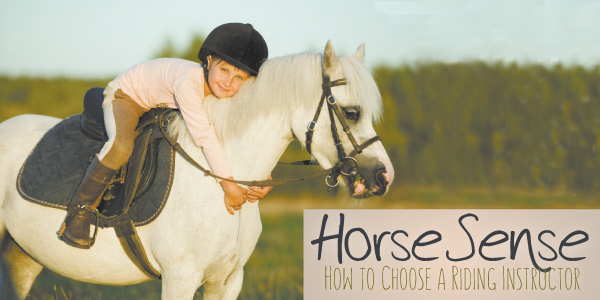Horse Sense – How to Choose a Riding Instructor
Horse Sense – How to Choose a Riding Instructor
By Sarah Evers Conrad
In Lexington, the self-proclaimed horse capital of the world, many children will ask at some point to ride a horse.
If you have never been around horses, it can be hard to know how to get your child started.
Among the many ways to get involved with horses, riding lessons are the most common first step.
Finding the right riding instructor can take time and effort, but making a good choice can lead to a positive, safe experience.
Not just anyone should be able to call themselves a riding instructor. However, there is no law requiring instructors to be licensed or certified.
Still, many professionals have gone through a rigorous certification process on their own from organizations such as the Certified Horsemanship Association, which is the largest certifying organization of instructors and barn managers in North America.
Certification adds an extra level of legitimacy to any professional’s resume, but so can many years of experience in teaching and horsemanship.
Here are some tips to get started with your search for a riding instructor.
♦ Look for instructors in your area by asking other riders you know or employees at tack shops and horse feed stores. Or you can search CHA’s online database of certified riding instructors at www.CHAinstructors.com or a database maintained by the American Horse Council at www.TimeToRide.com.
♦ The best way to evaluate instructors is to visit, observe, tour the facility and ask questions. Cost should not be the only deciding factor.
♦ Safety should be of the utmost importance, and helmets should either be required or strongly recommended.
♦ Learning horsemanship involves more than just climbing aboard and learning how to steer. Your child should learn how to take care of horses; what equipment to use and how to use it; how to handle horses safely; how to understand horse behavior.
♦ Any instructor you choose should act professionally, be experienced with horses and teaching, understand horse behavior and various riding techniques, and be trained in first aid and CPR.
♦ The instructor should be adept at teaching and teach with passion, patience, kindness and fairness. He or she should build up the rider’s confidence and adjust instruction to suit the rider’s needs and personality.
♦ The stable should be clean, neat, free of safety hazards, and well-maintained, with happy and healthy horses. All tack and equipment should be clean and in good condition.
♦ The stable need not be an Olympic-quality stable. There are quality instructors who have only a few horses available. All horses used for lessons should be calm and suitable for beginners.
♦ Ask the instructor for references so that you can talk to other students and parents to hear about their experiences with that instructor and stable.
Trust your instincts and do your homework, and you are sure to find the right riding instructor for your child.
 Sarah Evers Conrad has been an equine journalist and digital marketer since 2000, and she is the Editor of The Instructor magazine. In addition, she owns All In Stride Marketing, a digital marketing and communications agency. Info: www.AllInStrideMarketing.com.
Sarah Evers Conrad has been an equine journalist and digital marketer since 2000, and she is the Editor of The Instructor magazine. In addition, she owns All In Stride Marketing, a digital marketing and communications agency. Info: www.AllInStrideMarketing.com.

